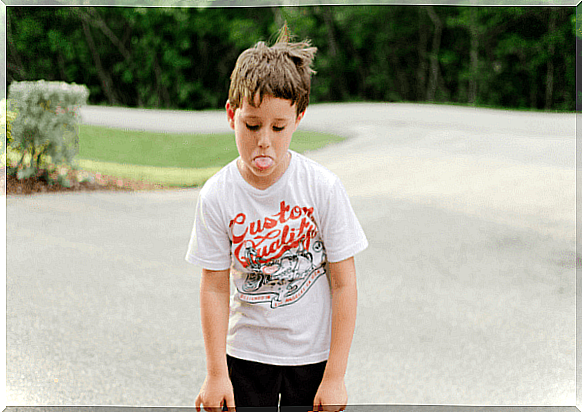3 Behavioral Techniques For Parents: Reinforcement, Punishment And Extinction

Outbursts of anger, crying, screaming, biting, beating… When it comes to parenting, we sometimes do not quite know how to stop inappropriate behavior. But behavioral techniques can help us control these and other behaviors.
They will also help us to encourage what we consider to be appropriate behavior. As you can imagine, it will require some effort on our part, but once you get started, we will see remarkable results… Read on for useful behavioral techniques you can use with your kids!
Behavioral techniques for parents: reinforcement
The behavioral techniques that we will see are divided into three groups: reinforcement, punishment, and extinction. These can cause certain behaviors to increase, remain the same, decrease or disappear. An amplifier is what makes it likely that the child will continue with a certain behavior or do it more often.
The gain can be positive or negative. The first would be a stimulus that occurs immediately after the behavior we want to maintain or improve. For example: if we tell a child that they did well after cleaning up their toys, we can bet that they are more likely to do it again the next day.
On the other hand, there is also negative reinforcement. This would mean withdrawing something negative from the child when they did what we want them to do. Practically speaking, for a small child, it can be uncomfortable for the mother to be angry with him. However, if the mother becomes very angry when the child apologizes, she will encourage him to apologize several times when he notices that the mother is upset.

Behavioral techniques for parents: punishment
Just as reinforcement will help us encourage desirable behaviors, we can use disciplinary techniques to reduce other behaviors. These include punishment and extinction. These behavioral techniques must be used immediately after the actions we want to change.
The punishment can also be positive or negative. Positive punishment will mean presenting something unpleasant to the child after he or she does what we think is inappropriate. When someone in the family scolds the child after he has performed a rampage, they use the technique.
Negative punishment, on the other hand, would be to remove something that the child likes after they do something we want them to stop doing. An example is taking the child out of the toy for two minutes after hitting another child or causing a conflict.

Behavioral techniques for parents: extinction
Some parents have seen that reprimands do not really work to eliminate a certain behavior. In fact, the reverse can happen and encourage it. It’s ok, this happens sometimes. Why? Because reprimands can act as a positive reinforcement for the child.
But how? It turns out that this slightly angry way of talking may not work as a negative stimulus for the child, but rather an attractive one. To explain: the child may notice that they are now getting attention from their parents.
It turns out that social attention is one of the biggest positive reinforcements that exists, both for children and adults. Thus, the child sees that the more they behave in a certain way, the more attention they get from their parents. Here, extinction is what we must do.
Extinction consists in suppressing the reinforcement of a behavior that has previously been reinforced. That is, if the child makes a prank, we must pretend that nothing happened. To put it another way, we want to draw back attention, a positive reinforcement. This means that we continue to do what we did without saying anything. That way, the child will stop performing that behavior. Interesting, is not it? Try it!
Photos courtesy of Zivile & Arunas, Alexander Dummer and Hunter Johnson.








